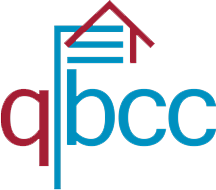Follow @lawsonair on Instagram
Gas Heating Replacement
CONTACT US NOW Brisbane (07) 3219 1817 sales@lawsonair.com.au | Sydney (02) 9188 6877 sydney@lawsonair.com.au
GAS HEATING vs ELECTRICAL HEATING
Gas heating v’s electrical heating is certainly a hot topic these days, academic analyses indicate that the transition from coal to gas was not the most effective approach to minimize the dangers of pollutants. The emission reduction was not enough to keep within the allowed carbon budget and the possible occurrence of methane leakage only exacerbates this problem. At this point, energy efficient electric appliances such as reverse cycle air conditioning with inverter technology are cheaper options and research indicates that a transition to gas heating should be avoided as electric renewables are now gaining traction due to their energy efficiency technologies.
Due to rises in gas prices and the increased efficiency of electric heat pumps or air conditioning, electricity is now a more viable option than gas heating in terms of both cost and emissions. Changing to a heat pump or reverse cycle air conditioning with inverter technology will have a far greater impact in reducing carbon emissions, power consumption and energy costs.
Around 50% of the heat energy is lost when using newly installed gas ducted heaters. This is due to flue inefficiency, ducting losses and pressure equalization mismatch. Compared to reverse cycle air conditioners that actually gain some heat energy from the atmosphere, the efficiency of gas heaters is insufficient.
Reverse cycle air conditioners, as well as heat pump technology, transport heat inside or outside of the building depending on whether the occupants would like to cool or heat the area. A reverse cycle air conditioner has two modes; cooling which shifts heat from the building outside and heating which shifts heat inside the building. Heating mode recovers free ambient heat from the air outside of the building, allowing reverse cycle air conditioner models with inverter technology to achieve efficiencies over 500%.
CONTACT US NOW Brisbane (07) 3219 1817 sales@lawsonair.com.au | Sydney (02) 9188 6877 sydney@lawsonair.com.au
SWITCHING TO ELECTRICAL HOME HEATING
The process of ‘energy switching’ from gas to electricity has become increasingly popular in recent years. In 2014, ClimateWorks suggested that ‘energy switching’ to renewables-based electricity would be a crucial step towards deep de-carbonisation, or achieving a zero carbon footprint.
A study conducted by the Alternative Technology Association (ATA) has shown that a large home in Melbourne might save around $658 per year by shifting to Reverse cycle air conditioners and away from gas heating appliances. The same study indicated that a large house in Canberra might save $1,733 per year.
According to the MEI, there may be 500,000 – 1,000,000 homes in eastern Australia that have installed reverse cycle air conditioners but still utilise gas heating in winter. These numbers indicate that a large amount of householders may still be unaware of the energy efficiency difference between gas heating and air conditioners. Using a reverse cycle air conditioner in winter can be the cheapest and more environmentally friendly way to heat your home.
As described by the ATA, householders are either misinformed or unaware that the economics of space heating have varied with the emergence of newer technologies home energy efficiency. The marketing for gas appliances may often mislead homeowners as well. In some states such as Victoria, gas heating is still seen as the cheaper option.

CONTACT US NOW Brisbane (07) 3219 1817 sales@lawsonair.com.au | Sydney (02) 9188 6877 sydney@lawsonair.com.au
REPLACEMENT OF DUCTED GAS HEATING
Ducted gas heating is when there is one central gas combustion heater which uses a system of air ducts to circulate warm air throughout the house. This form of heating is either underfloor or within the attic space of the house.
This method of heating your household may often be ineffective. The aforementioned energy loss that occurs with gas products also applies to ducted gas heating, perhaps even to a larger extent as heat energy is lost within the air ducts. Even though ducts are designed to keep the air in, conduction, convection and radiation will always result in heat loss. These phenomena occur significantly more in older models of ducting due to their outdated design/materials. Older systems may also be more susceptible to air leakage, another factor for heat loss.
As these ducts are built into the structure of a house, maintenance and inspection for them are often disregarded. Systems may stay uninspected for decades, suffering damage from other entities such as animals, occupants or renovation activities.
Homeowners have a couple of options when it comes to replacement of their ducted gas heating system. One option is to replace the gas heating system with a ducted reverse cycle system. This new system can utilise the same ducts as the original system, effectively saving money, or homeowners can opt for a complete reinstallation of the ducted system. Alternatively, a split system reverse cycle system can be installed, which utilises no ducts.
A huge benefit to replacing the gas heater with either a ducted or split reverse cycle system is the addition of a cooling mode to complement the heating. It should be noted that using a ducted reverse cycle system may incur heat loss through the ducts although the total loss of efficiency is still lower than that off a ducted gas heater.
We, at Lawson Air Conditioning, are specialists and can guide you through upgrading your home’s heating system. If you have yet to install a heating system, there are still some things you can consider. For example, underfloor heating is generally considered better than ceiling outlets due to the fact that warm air rises naturally. This causes heat to be delivered more effectively throughout the room as cold air sinks to the bottom only to be heated up by the heater. Consequently, cooling is better when it comes from the ceiling.
Our recommendation is to replace your current underfloor heating with the right Daikin air conditioning selection. This will not only ensure more airflow but, through the premium range of Daikin air conditioners, ensure the latest in energy efficiency technology.
On top of helping you through the air conditioning selection process, we also offer iZone Smart Home Solutions, which incorporates further energy savings and leading-edge technology.
- Touch Screen with Full Smart Home Functionality (iphone, ipad, android etc)
- Individual wireless room sensors with on/off control, up to 14 Zones.
- Superior energy efficiency through leading electronic ‘Constant’ bypass technology.
- Google Home & Amazon Alexa compatible.
- Add-On lighting, Garage Door, 240v Plugs, Sprinkler, Security and Home Automation.
GOVERNMENT PUSH TO ZERO EMISSIONS
In an attempt to tackle the climate crisis, gas emissions are being targeted by governments. This suppression of gas emissions also extends to gas heating systems, an option that is looking to be slowly phased out by the Australian government.
In the past, electricity was considered more harmful for the environment compared to the usage of natural gas. In the last decade, more electricity is being sourced from renewable sources, slowly allowing electricity to become a more environmentally friendly option.
ACT reached its goal to produce 100% renewable energy in late 2019. Along with this, the state has made a lot of effort to push its populace to electrical alternatives for applications, including gas heating systems. People who live in Canberra could be offered a government rebate of up to $5000 dollars to replace their gas systems with an electrical model. While other Australian states haven’t made similar schemes yet, it is anticipated that other states will soon follow in ACT’s footsteps in its approach to emission reduction.




